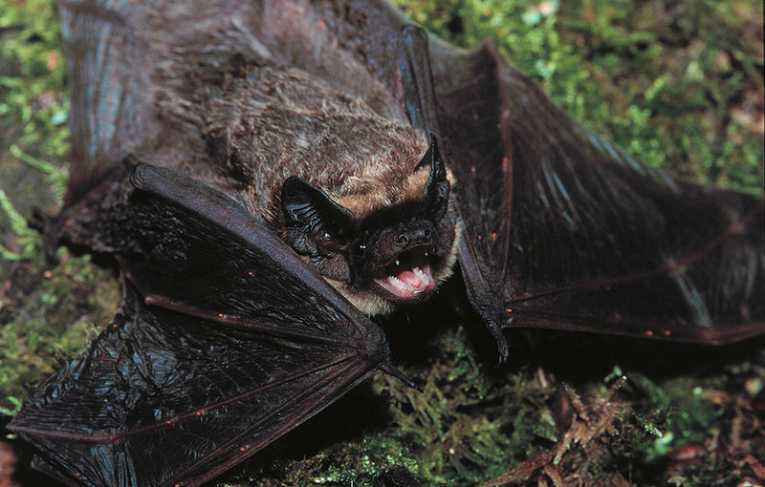Image: Parti-coloured bat. Credit: MPI for Ornithology.
Conservationists may be taking a second look at how close to extinction some animals are, thanks to scientists who have spotted important differences between how male and female bats feed.
Researchers from the Max Planck Institute for Ornithology in Radolfzell, Germany, looked at where parti-coloured bats hunt for food in Switzerland because they wanted to find out more about how they lived and how this might affect their numbers. They found that female bats feed in completely different areas to males. The females prefer to hunt specifically in aquatic habitats, such as lakes and marshes, but males hunt in a broad range of areas, including rivers, cities and farmland.
''We've seen that males have almost three times the amount of suitable habitat over females and that there is no overlap of foraging grounds between the sexes,'' says Marielle van Toor from the Max Planck Institute for Ornithology. ''From an ecological perspective, the males and females behave like two different species.''
Van Toor and her colleagues say that female bats need better quality hunting areas than males so that they can catch more food. They use more energy than males which they need to sustain them while rearing their young without support from males. This means that the females are less likely to tolerate changes to the aquatic environments, so protecting these habitats is critical to their survival and to the species as a whole.
Although these bats are found across a vast range running from the Netherlands all the way to Asia, they are rare in Western Europe and hence are a protected species.
The scientists hope that their work will make conservationists pay more attention to gender differences within animal populations, so that they can get a more realistic idea of how a species might be affected by environmental changes.
''This study shows that in animals where the sexes live separately, it's not necessarily the most common habitat for the species that needs protecting but the habitat of the specialised and more vulnerable groups of individuals within the species,'' van Toor says.










